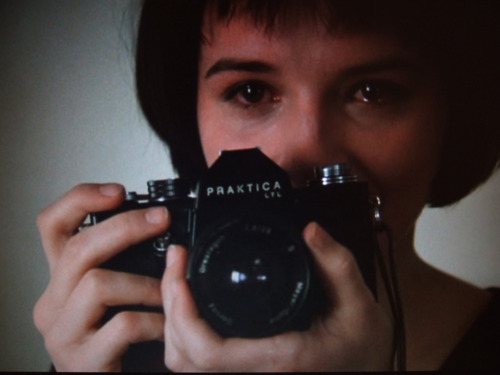 |
| Fra Angelico, "Annunciation" 1438-1445. Museo di San Marco, Firenze. |
This Renaissance fresco painted by Fra Angelico shows a moment which is quite crucial to the fast approaching Christmas holiday: The moment when Archangel Gabriel gave Mary a message that must have seemed quite overwhelming to her.
She is visited by an angel who either is about to tell her - or just has told her - some pretty devastating news. But she looks so calm. And her simple surroundings - the barren walls and the stool she sits on - accentuate her modest, but intent gaze. Mary and her visitor look at each other, both slightly bowing their heads, and they hold their hands in identical positions.
Even though they are situated below different arches, on each side of a column, their calm attentiveness towards each other makes them seem close. And the depth and space that is created by lines of perspective further enhance their intimacy.
Fra Angelico has created a balanced composition, where only the cell-like window far off in the back may distract us from the quiet action in the foreground. The architecture that surrounds the protagonists of this story is very similar to the architecture at the convent where Fra Angelico has painted the fresco, the San Marco Convent in Firenze. His "Annunciation" is the first painting you see as you ascend the stairs to the first floor, where the monks' cells are (many of them have beautiful frescos by Fra Angelico, as well):
 |
| Photo: roma-antica. |
Fra Angelico has painted several Annunciations (most of them on panel), and in all that I have seen, Gabriel wears a similar dress made from beautiful gold adorned material.
 |
| Fra Angelico, "Annunciation", 1433, detail. |
In this version Gabriel points up towards God and over towards Mary.
 |
| Fra Angelico, "Annunciation", 1433, detail. Museo Diocesano, Cortona. |
And as you can see here, this earlier version does not emit the same quiet contemplative mood as the San Marco fresco does:
 |
| Fra Angelico, "Annunciation" 1438-1445. Museo di San Marco, Firenze. |
Fra Angelico's depiction of this momentous moment will be my Merry Christmas post to you, and my last post this year.
***
I have had some great moments myself this year (though not quite as defining as the one Mary experienced a couple of thousand years ago...). Several of them have been about meeting people I have not seen in a long time. Thank you so much for showing up in my life again! (You know who you are:-)
Also, while talking about calmly accepting what the moment brings (like Mary does), I want to thank my beautiful yoga teacher, Kari, for making me more able to cut through the grime and experience quiet moments of physical and spiritual enlightenment.
I am so happy I started writing MOMENT/C this fall. It gives me great joy. Thank you so much for visiting, and welcome back early next year!











































